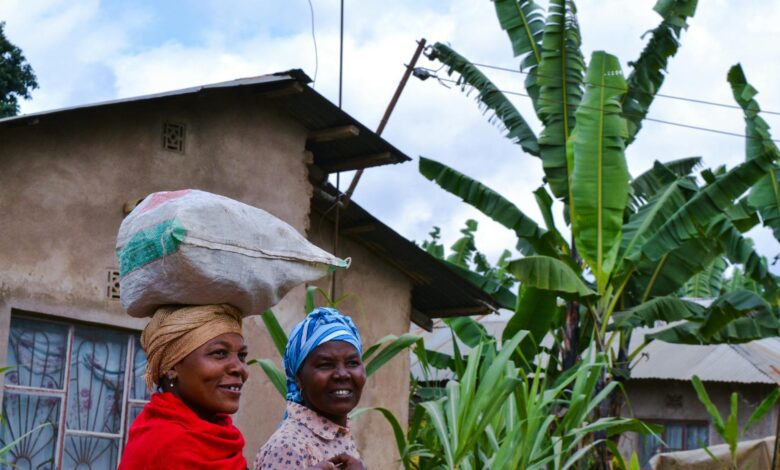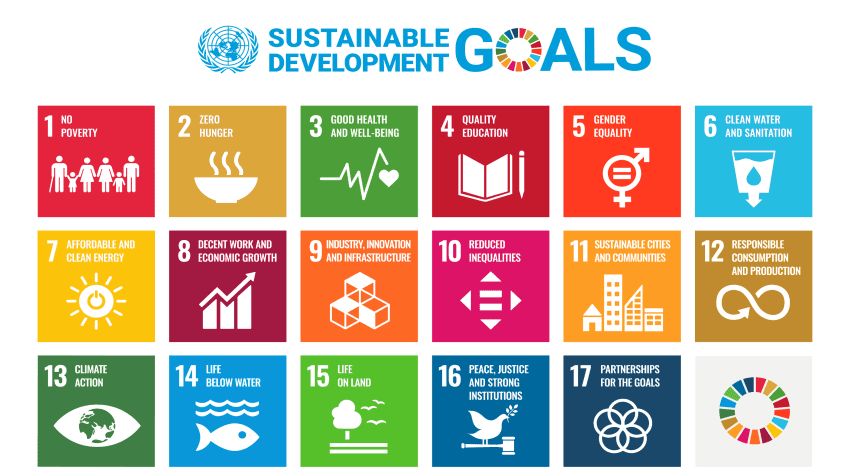Driving Global Change: Take Action for Sustainable Development Goals

The SDGs represent a universal call to action, transcending borders and uniting nations, organizations, and individuals in a shared vision of a better tomorrow. By aligning efforts and resources, stakeholders from all sectors can contribute to the achievement of these ambitious yet essential targets, fostering a more sustainable and resilient world for present and future generations.
Understanding the importance of sustainable development goals
The significance of the Sustainable Development Goals cannot be overstated. These goals recognize the intricate connections between social, economic, and environmental factors, highlighting the need for holistic and integrated solutions. By addressing the root causes of global challenges, the SDGs aim to create a virtuous cycle of progress, where advancements in one area reinforce and amplify positive outcomes in others.
Achieving the SDGs is not merely a moral imperative; it is a strategic investment in our collective well-being. Sustainable development practices promote resource efficiency, innovation, and long-term economic growth, while safeguarding the planet’s natural systems and fostering social inclusion and equity. By aligning with the SDGs, nations, businesses, and individuals can unlock new opportunities, mitigate risks, and contribute to a more stable and prosperous global landscape.
The 17 SDGs and their significance
The Sustainable Development Goals encompass a comprehensive range of interconnected targets, each addressing a critical aspect of sustainable development. These goals are:
- No Poverty: End poverty in all its forms everywhere.
- Zero Hunger: End hunger, achieve food security and improved nutrition, and promote sustainable agriculture.
- Good Health and Well-Being: Ensure healthy lives and promote well-being for all at all ages.
- Quality Education: Ensure inclusive and equitable quality education and promote lifelong learning opportunities for all.
- Gender Equality: Achieve gender equality and empower all women and girls.
- Clean Water and Sanitation: Ensure availability and sustainable management of water and sanitation for all.
- Affordable and Clean Energy: Ensure access to affordable, reliable, sustainable, and modern energy for all.
- Decent Work and Economic Growth: Promote sustained, inclusive, and sustainable economic growth, full and productive employment, and decent work for all.
- Industry, Innovation, and Infrastructure: Build resilient infrastructure, promote inclusive and sustainable industrialization, and foster innovation.
- Reduced Inequalities: Reduce inequality within and among countries.
- Sustainable Cities and Communities: Make cities and human settlements inclusive, safe, resilient, and sustainable.
- Responsible Consumption and Production: Ensure sustainable consumption and production patterns.
- Climate Action: Take urgent action to combat climate change and its impacts.
- Life Below Water: Conserve and sustainably use the oceans, seas, and marine resources for sustainable development.
- Life on Land: Protect, restore, and promote sustainable use of terrestrial ecosystems, sustainably manage forests, combat desertification, halt and reverse land degradation, and halt biodiversity loss.
- Peace, Justice, and Strong Institutions: Promote peaceful and inclusive societies for sustainable development, provide access to justice for all, and build effective, accountable, and inclusive institutions at all levels.
- Partnerships for the Goals: Strengthen the means of implementation and revitalize the global partnership for sustainable development.
Each of these goals is interconnected, and progress in one area often reinforces progress in others. For example, addressing climate change (Goal 13) can have positive impacts on health (Goal 3), water and sanitation (Goal 6), and sustainable cities (Goal 11). Similarly, promoting gender equality (Goal 5) can contribute to reducing poverty (Goal 1) and fostering economic growth (Goal 8).
Progress and challenges in achieving the SDGs

Since the adoption of the Sustainable Development Goals in 2015, significant progress has been made in various areas. However, the journey towards achieving these ambitious targets has also faced numerous challenges and setbacks. The COVID-19 pandemic, for instance, has exacerbated existing inequalities and reversed hard-won gains in areas such as poverty reduction, education, and health.
Despite these challenges, the global community remains steadfast in its commitment to the SDGs. Nations, organizations, and individuals have rallied together, adapting strategies and mobilizing resources to accelerate progress. Innovative solutions, partnerships, and collaborative efforts have emerged, demonstrating the resilience and determination to create a more sustainable future.
However, much work remains to be done. Addressing complex issues such as climate change, biodiversity loss, and persistent inequalities requires concerted and sustained efforts from all stakeholders. Achieving the SDGs demands a transformative shift in mindsets, policies, and practices, as well as unprecedented levels of collaboration and cooperation across sectors and borders.
Also read: The Devastating Effects of Deforestation: How Our Actions Impact the Environment
Key stakeholders in implementing the sustainable development goals
The successful implementation of the Sustainable Development Goals relies on the collective efforts of various stakeholders, each playing a crucial role in driving progress:
- Governments: National and local governments are responsible for developing and implementing policies, regulations, and initiatives that support the SDGs. They play a vital role in creating an enabling environment for sustainable development and mobilizing resources.
- Private Sector: Businesses and industries have a significant impact on the economy, environment, and society. By aligning their operations and strategies with the SDGs, they can contribute to sustainable development while creating shared value and long-term growth opportunities.
- Civil Society Organizations: Non-governmental organizations (NGOs), community-based organizations, and advocacy groups play a crucial role in raising awareness, advocating for change, and implementing grassroots initiatives that support the SDGs.
- Academic and Research Institutions: Universities, research centers, and think tanks contribute to the SDGs by advancing knowledge, developing innovative solutions, and providing evidence-based insights to inform policies and practices.
- International Organizations: Entities such as the United Nations and its specialized agencies, as well as international development organizations, facilitate global cooperation, coordinate efforts, and provide technical and financial support for the implementation of the SDGs.
- Individuals: Every person has a role to play in achieving the SDGs. By adopting sustainable lifestyles, making conscious choices, and actively engaging in community initiatives, individuals can contribute to positive change and drive progress towards a more sustainable future.
Collaboration and partnerships among these stakeholders are essential for leveraging collective knowledge, resources, and expertise. By working together, stakeholders can amplify their impact, address complex challenges, and accelerate progress towards the SDGs.
Strategies for integrating the SDGs into business practices
Businesses play a pivotal role in achieving the Sustainable Development Goals, as their operations and practices have far-reaching impacts on the economy, society, and the environment. By aligning their strategies with the SDGs, companies can not only contribute to a more sustainable future but also unlock new opportunities for innovation, growth, and competitive advantage.
Here are some strategies that businesses can adopt to integrate the SDGs into their practices:
- Conduct a Materiality Assessment: Identify the SDGs that are most relevant and material to your business operations, stakeholders, and value chain. This assessment will help prioritize efforts and allocate resources effectively.
- Embed SDGs into Corporate Strategy: Incorporate the relevant SDGs into your company’s overall strategy, mission, and values. Align business objectives and decision-making processes with the SDGs to ensure long-term sustainability and impact.
- Measure and Report Progress: Establish robust monitoring and reporting frameworks to track progress against the SDGs. Disclose your performance and impacts through sustainability reports, aligning with recognized reporting standards and guidelines.
- Foster Innovation and Collaboration: Encourage innovation and collaboration within your organization and across your value chain to develop sustainable products, services, and business models that contribute to the SDGs. Engage with stakeholders, including suppliers, customers, and local communities, to identify opportunities for collective action.
- Invest in Sustainable Operations: Examine your operations and supply chain to identify areas for improvement. Implement sustainable practices, such as resource efficiency, renewable energy use, waste reduction, and responsible sourcing, to minimize your environmental footprint and support the SDGs.
- Promote Capacity Building and Awareness: Invest in training and capacity-building programs to educate employees, partners, and stakeholders about the SDGs and their importance. Foster a culture of sustainability within your organization and beyond.
- Engage in Advocacy and Partnerships: Collaborate with governments, civil society organizations, and other businesses to advocate for policies and initiatives that support the SDGs. Participate in multi-stakeholder partnerships and collective action initiatives to amplify your impact.
By integrating the Sustainable Development Goals into their business strategies and operations, companies can not only contribute to a better world but also position themselves as responsible and forward-thinking organizations, attracting talent, building brand loyalty, and gaining a competitive edge in an increasingly sustainability-conscious market.
Also read: The Devastating Impact of Habitat Loss: Preserving Our Planet’s Biodiversity
Examples of successful SDG initiatives

Around the world, various organizations and initiatives have demonstrated remarkable progress in advancing the Sustainable Development Goals. These examples showcase the transformative power of collaboration, innovation, and commitment to creating a more sustainable future:
- Renewable Energy Initiatives: Companies like Google and Apple have made significant investments in renewable energy projects, contributing to the transition towards clean and sustainable energy sources (SDG 7: Affordable and Clean Energy).
- Sustainable Agriculture Practices: Organizations like Rainforest Alliance and Fairtrade International have worked with farmers and businesses to promote sustainable agricultural practices, ensuring food security, environmental conservation, and fair trade (SDG 2: Zero Hunger, SDG 12: Responsible Consumption and Production).
- Access to Education and Skills Development: Initiatives like the Malala Fund and Room to Read have focused on providing quality education and empowering girls and women, fostering gender equality and promoting inclusive societies (SDG 4: Quality Education, SDG 5: Gender Equality).
- Innovative Healthcare Solutions: Organizations like the Bill & Melinda Gates Foundation and Gavi, the Vaccine Alliance, have pioneered innovative healthcare solutions, improving access to essential medicines and vaccines in developing countries (SDG 3: Good Health and Well-Being).
- Sustainable Cities and Infrastructure: Cities like Copenhagen and Singapore have implemented comprehensive strategies to promote sustainable urban development, including efficient public transportation, green spaces, and sustainable infrastructure (SDG 11: Sustainable Cities and Communities).
- Climate Action and Environmental Conservation: Initiatives like the Paris Agreement and the UN Biodiversity Convention have brought together nations, organizations, and individuals to address climate change, protect biodiversity, and promote sustainable use of natural resources (SDG 13: Climate Action, SDG 14: Life Below Water, SDG 15: Life on Land).
These examples demonstrate the power of collaboration, innovation, and commitment to creating a more sustainable future. By learning from these successful initiatives and replicating effective strategies, stakeholders can accelerate progress towards achieving the Sustainable Development Goals.
Also read: Unleashing the Power of the Sun: How Does Solar Energy Work?
Tools and resources for tracking SDG progress
Monitoring and tracking progress towards the Sustainable Development Goals is essential for ensuring accountability, identifying areas for improvement, and celebrating successes. Various tools and resources have been developed to support stakeholders in measuring and reporting on their contributions to the SDGs:
- UN SDG Indicators: The United Nations has established a global indicator framework consisting of 231 unique indicators to monitor progress towards the 17 SDGs. These indicators provide a comprehensive set of metrics for tracking progress at the national and global levels.
- SDG Tracker: Developed by the Sustainable Development Solutions Network (SDSN) and the Bertelsmann Stiftung, the SDG Tracker is an online platform that presents data and visualizations for tracking progress on the SDGs across countries and regions.
- Corporate Reporting Tools: Organizations like the Global Reporting Initiative (GRI) and the World Business Council for Sustainable Development (WBCSD) have developed frameworks and guidelines to help businesses align their sustainability reporting with the SDGs.
- SDG Impact Assessment Tools: Tools like the SDG Impact Assessment Tool developed by the United Nations Development Programme (UNDP) and the SDG Action Manager by B Lab help organizations assess their impacts on the SDGs and identify areas for improvement.
- SDG Partnerships Platform: The UN’s SDG Partnerships Platform serves as a global registry of multi-stakeholder partnerships and initiatives aimed at advancing the SDGs, fostering collaboration and knowledge-sharing.
- National and Local Monitoring Initiatives: Many countries and cities have established their own monitoring frameworks and platforms to track progress on the SDGs at the national and local levels, tailored to their specific contexts and priorities.
By leveraging these tools and resources, stakeholders can effectively measure their contributions, identify gaps and areas for improvement, and collaborate with others to accelerate progress towards the Sustainable Development Goals.
The role of individuals in contributing to the sustainable development goals
While achieving the Sustainable Development Goals requires collective action from governments, organizations, and various stakeholders, individuals also play a crucial role in driving progress towards a more sustainable future. Every person, through their daily choices and actions, can contribute to the realization of the SDGs:
- Adopt Sustainable Lifestyles: Individuals can make conscious choices to reduce their environmental footprint by conserving energy and water, minimizing waste, and adopting sustainable consumption patterns (SDG 12: Responsible Consumption and Production).
- Support Ethical and Sustainable Businesses: Consumers can exercise their purchasing power by supporting businesses that prioritize sustainability, ethical practices, and alignment with the SDGs (SDG 8: Decent Work and Economic Growth, SDG 12: Responsible Consumption and Production).
- Advocate for Change: Individuals can raise awareness about the SDGs, participate in community initiatives, and advocate for policies and practices that support sustainable development (SDG 16: Peace, Justice, and Strong Institutions).
- Volunteer and Engage in Community Projects: Volunteering and participating in local projects can contribute to various SDGs, such as improving access to education, promoting gender equality, or protecting the environment (SDG 4: Quality Education, SDG 5: Gender Equality, SDG 15: Life on Land).
- Invest in Sustainable Solutions: Individuals can support sustainable development by investing in companies, funds, or initiatives that prioritize environmental, social, and governance (ESG) factors and contribute to the SDGs.
- Educate and Inspire Others: By sharing knowledge, experiences, and best practices, individuals can inspire and empower others to take action and contribute to the achievement of the SDGs.
Every individual has the power to make a difference, and collective action can amplify the impact. By integrating sustainable practices into our daily lives and actively engaging in initiatives that support the SDGs, we can all contribute to creating a more equitable, prosperous, and sustainable world for present and future generations.
Conclusion: Embracing the SDGs for a sustainable future
The Sustainable Development Goals represent a bold and ambitious vision for a better world, where no one is left behind and the planet’s resources are preserved for generations to come. Achieving these goals requires a collective effort from all stakeholders, including governments, businesses, civil society organizations, academic institutions, and individuals.
By embracing the SDGs and integrating them into policies, practices, and daily lives, we can unlock a pathway towards a more sustainable future. This journey demands a transformative shift in mindsets, a commitment to innovation, and a willingness to collaborate across borders and sectors.
The challenges we face are daunting, but the potential rewards are immense. A world where poverty, hunger, and inequality are eradicated, where quality education and healthcare are accessible to all, and where the environment is protected and restored, is not only a moral imperative but also a strategic investment in our collective well-being.
As we navigate this path, it is essential to celebrate and learn from the successes and best practices that have emerged from various initiatives around the world. By replicating and scaling up these effective strategies, we can accelerate progress and inspire others to join the movement towards sustainable development.
Ultimately, the achievement of the Sustainable Development Goals is a shared responsibility, and every individual has a role to play. By making conscious choices, supporting sustainable businesses, advocating for change, and inspiring others, we can all contribute to creating a better world for ourselves and future generations.
Embracing the Sustainable Development Goals is not just a noble endeavor; it is a necessity for ensuring a prosperous and thriving future for all. Join the movement towards sustainable development by taking action in your personal and professional life. Engage with like-minded individuals and organizations, and contribute your unique skills and talents towards achieving these ambitious yet essential goals. Together, we can unlock the full potential of the SDGs and create a world where no one is left behind, and the planet’s resources are preserved for generations to come.
Also read: The Remarkable Benefits of Planting Trees: Enhancing Our Environment and Quality of Life




